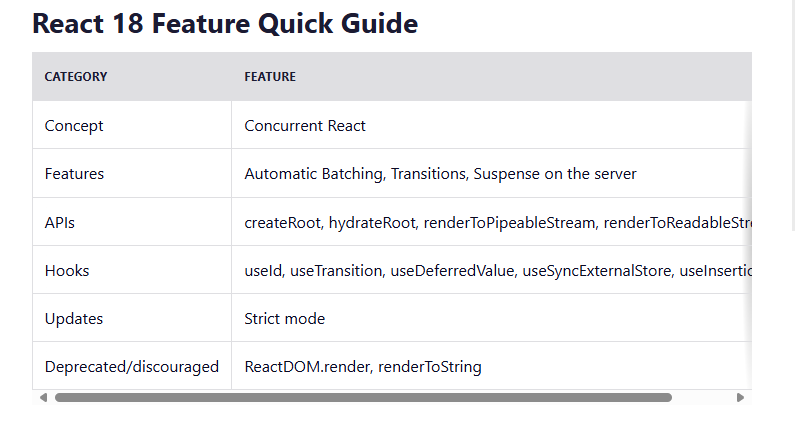React 18 Feature Quick Guide

Now let’s look at each of these updates in more detail. But first, if you haven’t already, let’s learn how to update React.
- Concurrent Rendering: Improves performance by allowing React to work on multiple tasks simultaneously without blocking the main thread.
- Automatic Batching: Multiple state updates within an event handler are batched into a single render to reduce unnecessary renders.
- Transitions: A new way to mark non-urgent UI updates, like navigating between pages, to make the app feel more responsive.
<Suspense>Improvements: Enhances support for data fetching, allowing components to “wait” for asynchronous data and show fallback UI while loading.- New
startTransitionAPI: Allows developers to mark updates as transitions, prioritizing urgent updates like typing over transitions like switching tabs. - New
useIdHook: Helps generate unique IDs that are stable across renders, useful for accessibility or form elements. - Streaming Server-Side Rendering (SSR): Improves performance by allowing HTML to be sent in chunks, allowing the browser to display parts of the page while the rest is still rendering.
- Selective Hydration: Lets the browser hydrate only the parts of the UI that need it, improving load times for interactive elements.
- Improved Strict Mode: More development checks to identify potential side effects and bugs, helping to make React apps more predictable.
How to upgrade to React 18
Install React 18 and React DOM from npm or yarn, like this:
npm install react react-dom
Then, you’ll want to use createRoot instead of render.
In your index.js, update ReactDOM.render to ReactDOM.createRoot to create a root, and render your app using root.